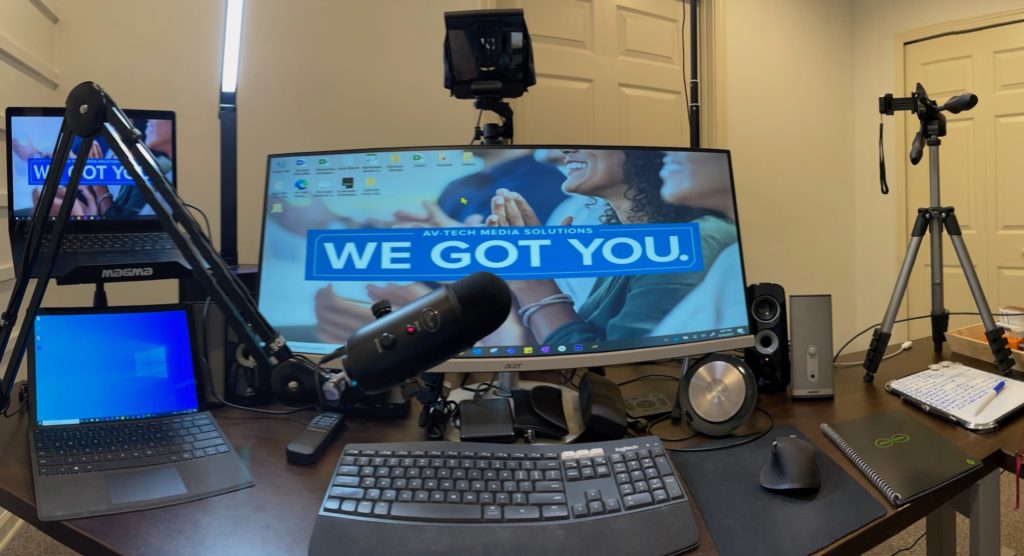When so many of us moved our work headquarters to our home offices (or dining room tables, or kitchen counters) shopping for new equipment became fairly simple, with certain companies dominating the marketplace with keyboards, mice, cameras, or lights that were readily available and easy to set up. Chances are if you’re reading this from your home workspace right now, there are Logitech components within reach; the company quickly became the leader of the prosumer equipment arena, even as order volume outpaced delivery, resulting in months-long backorders.
For those of us specializing in designing and outfitting commercial office spaces, however, manufacturers specializing in the prosumer space have created a challenge. While offering quality cameras, microphones, and speakers for a home workspace, integration becomes problematic when at the office or on-site with a client or vendor. BYOD is everything in 2022; if a device works great at home but doesn’t seamlessly blend with any other infrastructure, the result can be a costly work stoppage.
Conversely, there are products in the marketplace designed to be compatible in just about any setting. With a Crestron Microsoft-certified product, for example, it’s possible to enter an environment and instantly hijack the system in place there, be it Cisco web conferencing, WebEx, Zoom, or another interface. In addition to video conferencing capabilities, Crestron is the leading manufacturer of control systems, offering a touchpad base that can close blinds, turn on lights and speakers and launch a presentation. Individual camera controls can pan, tilt and zoom. This makes a difference when you walk into a Fortune 100 company boardroom with 24 seats at the table, microphones in the ceiling, multiple cameras, and a switching panel. Simply trying to hook up a laptop with consumer-grade equipment isn’t going to fly.
The bottom line is that while consumer and prosumer products are handy and easily available for home offices, there are others that are much better suited for integrated systems and offices. If you have in-house AV media specialists, they can often recommend home office tools that can better handle transitions to and from the office. Likewise, when conceptualizing commercial space, it’s important to take the time to visualize all that needs to happen there not just from a technology standpoint, but functionality as well. By widening the view, a more tailored system can be configured. As specialists in designing commercial AV technology systems, we have plenty of experience and expertise to offer to the conversation as well. If you’ve got a project in mind, contact us for help. We Got You.



